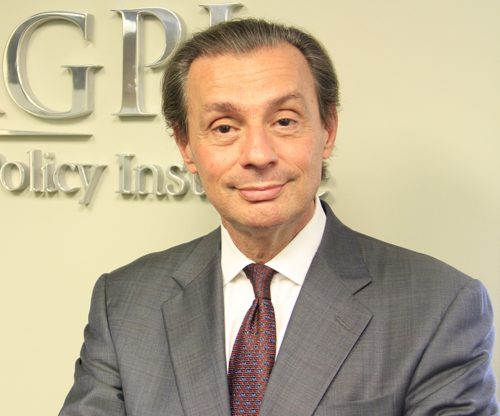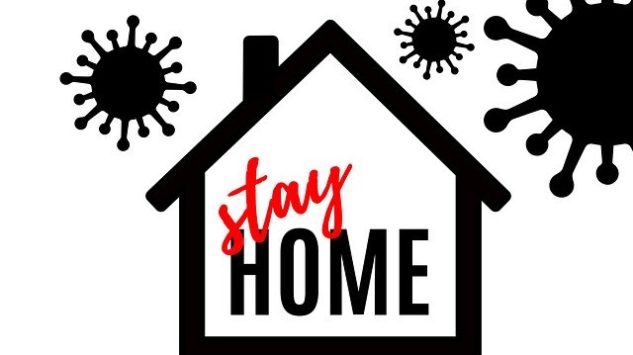WASHINGTON – Here is the hard truth. America had no plan designed for national health emergencies that could be activated as soon as policy-makers realized the threat of coronavirus. There was almost nothing in place. There was no “early warning system” that would sound the alarm. There was no structure, no prepositioned equipment that could be deployed to crisis points. No well oiled chain of command.
No plan
In a word, there was no comprehensive, tried and tested plan that would integrate public health monitoring, data gathering. There were no models to assess the possible economic impact of public health countermeasures. Furthermore, there were no stockpiles of emergency materials, and no proven and tested logistics system to be activated in order to deliver such material to crisis areas. Sadly, whatever has been done so far, it is all about “make it up as you go”.
It did not have to be this way. By now we know that Taiwan, for instance, reacted promptly and effectively to the very same crisis, because they had a robust plan in place. The plan was generated after the big scare caused by SARS, another respiratory illness that originated from China back in 2003. If Taiwan could create a plan, so could we. There is no excuse for having essentially almost nothing in place.
Rely on what the doctors say
In this catastrophic leadership void, by default, policy-makers sought the counsel and advice of the subject matter experts: i.e. the top national medical authorities. And the medical experts did the best they could on the basis of the extremely limited knowledge they had about this coronavirus.
Confronted with a rapidly expanding global epidemic caused by an unknown pathogen for which there is no treatment or vaccine, the medical authorities, after having minimized the extent of the public health threat, eventually gave what they thought was the best prudent advice.
If the government really wanted to stop this epidemic –they counseled– then it had to order a nationwide, drastic quarantine regime covering as many people as possible. This is only known remedy to stop or slow down contagion. In other words: “Shut down the US economy for…as long as it takes”.
If you want to stop contagion, this is reasonable and prudent public health advice. Except that the medical authorities did not even try to balance the public health advantages of “social distancing” against the colossal economic damage caused by shutting down almost the entire country.
Worst case scenarios fueled panic
At the same time, the same medical authorities, trying to play it safe, gave prognostications about contagion and fatalities based on worst case scenarios. Until not too long ago, they were talking about possibly millions of Americans dead as a result of coronavirus. Imagine that. Millions of Americans would die because of a new disease for which there is no cure.
While we were treated with scary scenarios of millions of dead Americans, the news media wittingly or unwittingly fanned the flames of a growing national panic. The 24/7 news was all about the relentless growth of the pandemic. It was all about semi-desperate doctors and nurses working impossible long shifts in overcrowded hospitals facing a tsunami of severely ill patients, while lacking even basic protective gear for their staff. Not to mention lack of beds and critical equipment, while suppliers struggled to meet unprecedented demand.
Country in chaos
So, the general impression was that America was in chaos. We were confronted with a never-happened-before historic calamity that might kill millions, while we had nothing to fight it, except for quarantines, a physical isolation remedy first deployed by the Republic of Venice during the Plague of 1347.
From the standpoint of policy-makers, if almost certain death for millions is the end game unless we quarantine America, then even the most drastic jobs-killing measures seemed sensible. Thinking about how to save the economy when everybody around you may be positive and soon enough intubated, with tens of thousands ending up dead, seemed stupid.
Catching our breath
Now, a few months into this crisis, we are beginning to catch our breath. National and state authorities, after having thrown trillions of dollars to corporations and individuals in an effort to salvage a shuttered US economy, are at least beginning to look at how we can safely reopen, in increments, our semi-comatose 20 trillion dollar economy. At the same time, based on various accounts, there is reasonable hope that some kind of treatment and, down the line a vaccine, will “soon” become available.
We must have a plan
It did not have to go this way. As the case of Taiwan demonstrates, even without a cure or a vaccine, it could have been possible to plan for such an epidemic, this way minimizing confusion and frictions, and possibly saving many lives.
During the Cold War, when nuclear war was a distinct possibility, US Presidents relied on the ultra-secret SIOP, or Single Integrated Operational Plan. Good or bad as they were, periodically updated SIOPS tried to created a comprehensive scenario that would capture “everything” in case of a possible all out nuclear conflict; so that the Commander in Chief would have the opportunity to see “the whole picture” before making critical decisions most likely leading to unprecedented destruction and millions of lives lost.
On a similar note, after the first oil shock of 1973-74, the US and other oil consumer countries created the International Energy Agency, IEA. The IEA would serve as an information-sharing clearing house linking oil importers and as an energy policy coordination body, in case another major supply disruption would take place at any time in the future.
Furthermore, the US decided to create a massive Strategic Petroleum Reserve, (SPR) essentially a huge stockpile of crude oil that could be released into the US economy in case of a sudden crude oil shortage caused by war or other occurrences. The IEA and the SPR could not prevent another oil supply disruption. But they would mitigate the impact of any supply cuts.
Public health is national security
Well, it’s time for America to develop the public health equivalent of an IEA, SPR, and nuclear war SIOPs. I am not suggesting that the goal here is to gain the capacity to predict, prevent and quickly defeat any possible public health emergency. That is impossible.
However, just as we did with the horrible nuclear war scenarios, or the possibility of devastating oil supply cuts, as a nation, as a minimum we must have reliable early warning systems that will alert policy-makers when something unusual happens anywhere in the world on the public health front. And we should have the “data fusion centers” that will help all the experts and policy-makers, so that they will know what is actually going on in “real time”.
Balancing public health and economic survival
More broadly, America needs to have comprehensive plans envisaging different scenarios when it comes to balancing public health countermeasures and the economic impact of such countermeasures. Elected leaders need to be able to see the implications and consequences of difficult decisions.
Elected leaders are the policy-makers in charge
Policy-makers relying on various inputs are the ultimate decision-makers. It makes no sense for elected leaders to say: “We do not know much about this, therefore we shall follow the advice of the medical experts”. Medical experts are not elected policy-makers. Of course, their input is essential. But they are not economists or public administration experts. They see a critical piece of this troublesome reality. But not the whole picture.
Indeed, at what point does the remedy –shutting everything down in order to prevent contagion– becomes worse than the disease in terms of destruction of businesses and employment? Policy-makers should do their best to save lives. But they should be able to assess the danger of killing the national economy against the worthy humanitarian goal of saving lives
This is why policy-makers need real time data that will help build credible scenarios. All this should be part of a comprehensive, periodically updated plan.
 |
Paolo von Schirach is the Editor of the Schirach Report He is also the President of the Global Policy Institute, a Washington DC think tank, and Chair of Political Science and International Relations at Bay Atlantic University, also in Washington, DC. |
